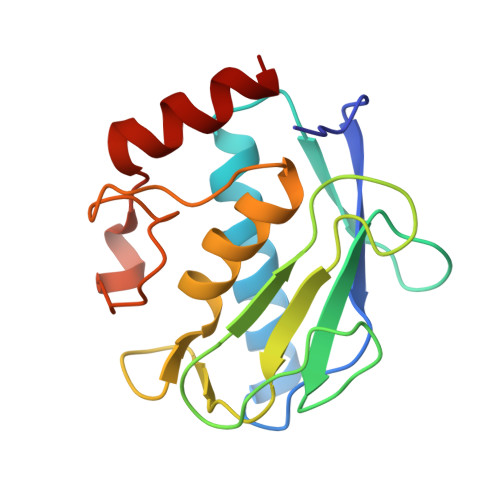Synthesis of bicyclic molecular scaffolds (BTAa): an investigation towards new selective MMP-12 inhibitors.
Mannino, C., Nievo, M., Machetti, F., Papakyriakou, A., Calderone, V., Fragai, M., Guarna, A.(2006) Bioorg Med Chem 14: 7392-7403
- PubMed: 16899369
- DOI: https://doi.org/10.1016/j.bmc.2006.07.028
- Primary Citation of Related Structures:
2HU6 - PubMed Abstract:
Starting from 3-aza-6,8-dioxa-bicyclo[3.2.1]octane scaffold (BTAa) a virtual library of molecules was generated and screened in silico against the crystal structure of the Human Macrophage Metalloelastase (MMP-12). The molecules obtaining high score were synthesized and the affinity for the catalytic domain of MMP-12 was experimentally proved by NMR experiments. A BTAa scaffold 20 having a N-hydroxyurea group in position 3 and a p-phenylbenzylcarboxy amide in position 7 showed a fair inhibition potency (IC50 = 149 microM) for MMP-12 and some selectivity towards five different MMPs. These results, taken together with the X-ray structure of the adduct between MMP-12, the inhibitor 20 and the acetohydroxamic acid (AHA), suggest that bicyclic scaffold derivatives may be exploited for the design of new selective matrix metalloproteinase inhibitors (MMPIs).
Organizational Affiliation:
Department of Organic Chemistry U. Schiff, University of Florence, 50019 Sesto Fiorentino (FI), Italy.


















